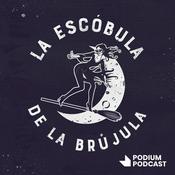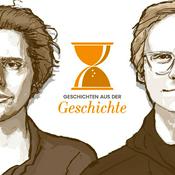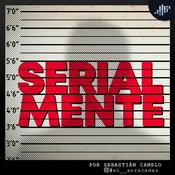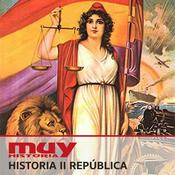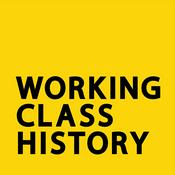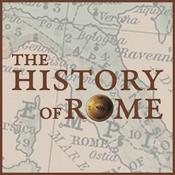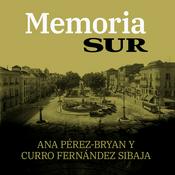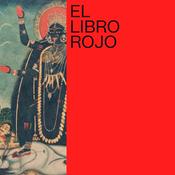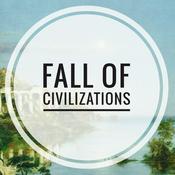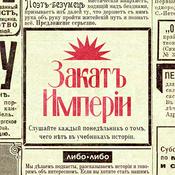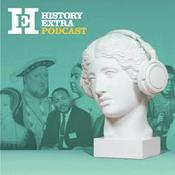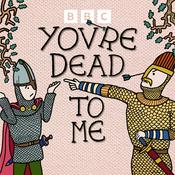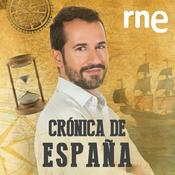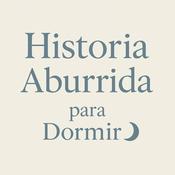1095 episodios
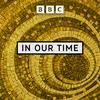
Eclipses (Archive Episode)
18/12/2025 | 49 min
To celebrate Melvyn Bragg’s 27 years presenting In Our Time, five well-known fans of the programme have chosen their favourite episodes. Guy Garvey, lyricist and lead singer of the band Elbow, has selected the episode on eclipses, first broadcast in December 2020. Solar eclipses are some of life’s most extraordinary moments, when day becomes night and the stars come out before day returns either all too soon or not soon enough, depending on what you understand to be happening. In ancient China, for example, there was a story that a dragon was eating the sun and it had to be scared away by banging pots and pans if the sun were to return. Total lunar eclipses are more frequent and last longer, with a blood moon coloured red like a sunrise or sunset. Both events have created the chance for scientists to learn something remarkable, from the speed of light, to the width of the Atlantic, to the roundness of the Earth, to discovering helium and proving Einstein’s Theory of General Relativity. With Carolin Crawford Public Astronomer based at the Institute of Astronomy, University of Cambridge and a fellow of Emmanuel College Frank Close Emeritus Professor of Physics at the University of Oxford And Lucie Green Professor of Physics and a Royal Society University Research Fellow at Mullard Space Science Laboratory at University College London Producers: Simon Tillotson and Julia Johnson Spanning history, religion, culture, science and philosophy, In Our Time from BBC Radio 4 is essential listening for the intellectually curious. In each episode, host Melvyn Bragg and expert guests explore the people, ideas, events and discoveries that have shaped our world. In Our Time is a BBC Studios production

Feathered Dinosaurs (Archive Episode)
11/12/2025 | 48 min
After 27 years, Melvyn Bragg has decided to step down from the In Our Time presenter’s chair. With over a thousand episodes to choose from, he has selected just six that capture the huge range and depth of the subjects he and his experts have tackled. In this sixth of his choices, we hear Melvyn Bragg and his guests in 2017 discussing new discoveries about dinosaurs. Their topic is the development of theories about dinosaur feathers, following discoveries of fossils which show evidence of those feathers. All dinosaurs were originally thought to be related to lizards (the word 'dinosaur' was created from the Greek for 'terrible lizard') but that now appears false. In the last century, discoveries of fossils with feathers established that at least some dinosaurs were feathered and that some of those survived the great extinctions and evolved into the birds we see today. There are still many outstanding areas for study, such as what sorts of feathers they were, where on the body they were found, what their purpose was and which dinosaurs had them. With Mike Benton Professor of Vertebrate Palaeontology at the University of Bristol Steve Brusatte Reader and Chancellor's Fellow in Vertebrate Palaeontology at the University of Edinburgh and Maria McNamara Senior Lecturer in Geology at University College, Cork Producer: Simon Tillotson Spanning history, religion, culture, science and philosophy, In Our Time from BBC Radio 4 is essential listening for the intellectually curious. In each episode, host Melvyn Bragg and expert guests explore the characters, events and discoveries that have shaped our world

Pauli's Exclusion Principle (Archive Episode)
04/12/2025 | 49 min
After 27 years, Melvyn Bragg has decided to step down from the In Our Time presenter’s chair. With over a thousand episodes to choose from, he has selected just six that capture the huge range and depth of the subjects he and his experts have tackled. In this fifth of his choices, we hear Melvyn Bragg and his guests discuss a key figure from quantum mechanics. Their topic is the life and ideas of Wolfgang Pauli (1900-1958), whose Exclusion Principle is one of the key ideas in quantum mechanics. A brilliant physicist, at 21 Pauli wrote a review of Einstein's theory of general relativity and that review is still a standard work of reference today. The Pauli Exclusion Principle proposes that no two electrons in an atom can be at the same time in the same state or configuration, and it helps explain a wide range of phenomena such as the electron shell structure of atoms. Pauli went on to postulate the existence of the neutrino, which was confirmed in his lifetime. Following further development of his exclusion principle, Pauli was awarded the Nobel Prize in Physics in 1945 for his 'decisive contribution through his discovery of a new law of Nature'. He also had a long correspondence with Jung, and a reputation for accidentally breaking experimental equipment which was dubbed The Pauli Effect. With Frank Close Fellow Emeritus at Exeter College, University of Oxford Michela Massimi Professor of Philosophy of Science at the University of Edinburgh and Graham Farmelo Bye-Fellow of Churchill College, University of Cambridge Producer: Simon Tillotson Spanning history, religion, culture, science and philosophy, In Our Time from BBC Radio 4 is essential listening for the intellectually curious. In each episode, host Melvyn Bragg and expert guests explore the characters, events and discoveries that have shaped our world

Zeno's Paradoxes (Archive Episode)
20/11/2025 | 47 min
After 27 years, Melvyn Bragg has decided to step down from the In Our Time presenter’s chair. With over a thousand episodes to choose from, he has selected just six that capture the huge range and depth of the subjects he and his experts have tackled. In this third of his choices, we hear Melvyn Bragg and his guests discuss Greek philosophy. Their topic is Zeno of Elea, a pre-Socratic philosopher from c490-430 BC whose paradoxes were described by Bertrand Russell as "immeasurably subtle and profound." The best known argue against motion, such as that of an arrow in flight which is at a series of different points but moving at none of them, or that of Achilles who, despite being the faster runner, will never catch up with a tortoise with a head start. Aristotle and Aquinas engaged with these, as did Russell, yet it is still debatable whether Zeno's Paradoxes have been resolved. With Marcus du Sautoy Professor of Mathematics and Simonyi Professor for the Public Understanding of Science at the University of Oxford Barbara Sattler Lecturer in Philosophy at the University of St Andrews and James Warren Reader in Ancient Philosophy at the University of Cambridge Producer: Simon Tillotson In Our Time is a BBC Studios Production Spanning history, religion, culture, science and philosophy, In Our Time from BBC Radio 4 is essential listening for the intellectually curious. In each episode, host Melvyn Bragg and expert guests explore the characters, events and discoveries that have shaped our world

Thomas Hardy's Poetry (Archive Episode)
13/11/2025 | 50 min
After 27 years, Melvyn Bragg has decided to step down from the In Our Time presenter’s chair. With over a thousand episodes to choose from, he has selected just six that capture the huge range and depth of the subjects he and his experts have tackled. In this second of his choices, we hear Melvyn Bragg and his guests discuss one of his favourite poets.Their topic is Thomas Hardy (1840 -1928) and his commitment to poetry, which he prized far above his novels. In the 1890s, once he had earned enough from his fiction, Hardy stopped writing novels altogether and returned to the poetry he had largely put aside since his twenties. He hoped that he might be ranked one day alongside Shelley and Byron, worthy of inclusion in a collection such as Palgrave's Golden Treasury which had inspired him. Hardy kept writing poems for the rest of his life, in different styles and metres, and he explored genres from nature, to war, to epic. Among his best known are what he called his Poems of 1912 to 13, responding to his grief at the death of his first wife, Emma (1840 -1912), who he credited as the one who had made it possible for him to leave his work as an architect's clerk and to write the novels that made him famous.WithMark Ford Poet, and Professor of English and American Literature, University College London.Jane Thomas Emeritus Professor of English at the University of Hull and Senior Visiting Research Fellow at the University of LeedsAndTim Armstrong Professor of Modern English and American Literature at Royal Holloway, University of LondonProducer: Simon TillotsonSpanning history, religion, culture, science and philosophy, In Our Time from BBC Radio 4 is essential listening for the intellectually curious. In each episode, host Melvyn Bragg and expert guests explore the characters, events and discoveries that have shaped our world.
Más podcasts de Historia
Podcasts a la moda de Historia
Acerca de In Our Time
Escucha In Our Time, La escóbula de la brújula y muchos más podcasts de todo el mundo con la aplicación de radio.es

Descarga la app gratuita: radio.es
- Añadir radios y podcasts a favoritos
- Transmisión por Wi-Fi y Bluetooth
- Carplay & Android Auto compatible
- Muchas otras funciones de la app
Descarga la app gratuita: radio.es
- Añadir radios y podcasts a favoritos
- Transmisión por Wi-Fi y Bluetooth
- Carplay & Android Auto compatible
- Muchas otras funciones de la app


In Our Time
Descarga la app,
Escucha.
